Paleontology
-
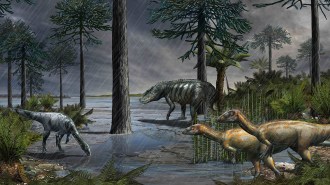 Earth
EarthA volcano-induced rainy period made Earth’s climate dinosaur-friendly
New physical evidence links eruptions 234 million to 232 million years ago to climate changes that let dinosaurs start their climb to dominance.
By Megan Sever -
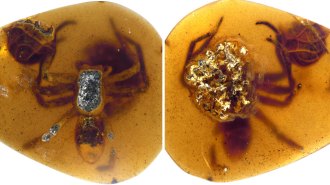 Paleontology
PaleontologyThis is the oldest fossil evidence of spider moms taking care of their young
A spider trapped in amber 99 million years ago guarded her eggs and may have helped raise her young.
By Freda Kreier -
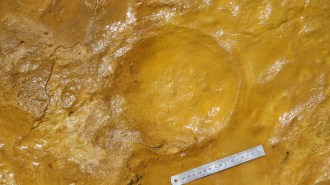 Paleontology
PaleontologyFossil tracks may reveal an ancient elephant nursery
Fossilized footprints at a site in Spain include those of an extinct elephant’s newborns, suggesting the animals may have used the area as a nursery.
By Sid Perkins -
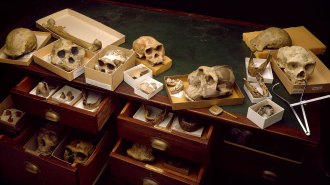 Humans
HumansFossils and ancient DNA paint a vibrant picture of human origins
Paleoanthropologists have sketched a rough timeline of how human evolution played out, centering the early action in Africa.
By Erin Wayman -
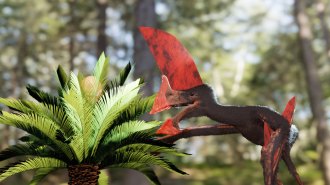 Paleontology
PaleontologyThis big-headed pterosaur may have preferred walking over flying
The most intact fossil of a tapejarid pterosaur ever found yields new insight into how the ancient reptile lived.
By Nikk Ogasa -
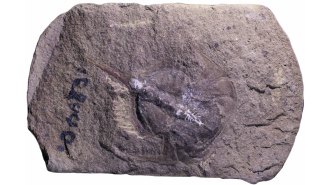 Paleontology
PaleontologyHow fossilization preserved a 310-million-year-old horseshoe crab’s brain
A 310-million-year-old horseshoe crab’s brain was preserved in clay, thanks to an uncommon fossilization process that protected the fragile neural tissues.
-
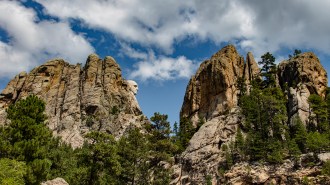 Earth
EarthA new book reveals stories of ancient life written in North America’s rocks
In ‘How the Mountains Grew,’ John Dvorak probes the interlinked geology and biology buried within the rocks of North America.
-
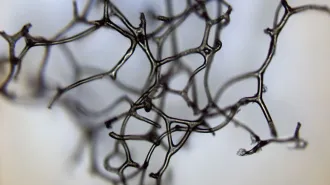 Life
LifeIf confirmed, tubes in 890-million-year-old rock may be the oldest animal fossils
Newly described wormlike fossils may be ancient sea sponges. If confirmed, the fossils would reveal a remarkably early start to animal life.
By Jake Buehler -
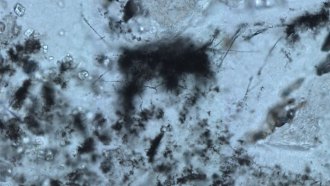 Paleontology
Paleontology3.42-billion-year-old fossil threads may be the oldest known archaea microbes
The structure and chemistry of these ancient cell-like fossils may hint where Earth’s early inhabitants evolved and how they got their energy.
-
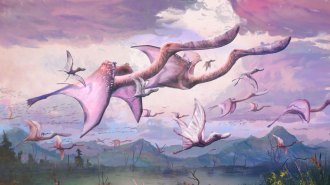 Paleontology
PaleontologyPterosaurs may have been able to fly as soon as they hatched
A fossil analysis shows the flying reptile hatchlings had a stronger bone crucial for lift-off that adults and shorter, broader wings for agility.
-
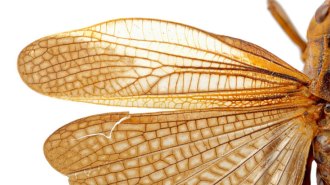 Paleontology
PaleontologyInsects had flashy, noise-making wings as early as 310 million years ago
The structure of a grasshopper-like insect’s fossilized wing suggests it crackled and reflected light, perhaps to attract mates or warn off predators.
-
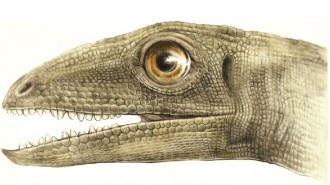 Paleontology
PaleontologyFossilized dung from a dinosaur ancestor yields a new beetle species
Whole beetles preserved in fossilized poo suggest that ancient droppings may deserve a closer look.
By Nikk Ogasa